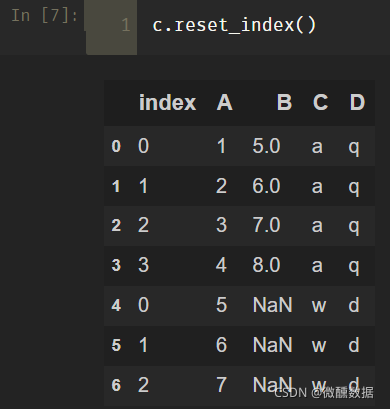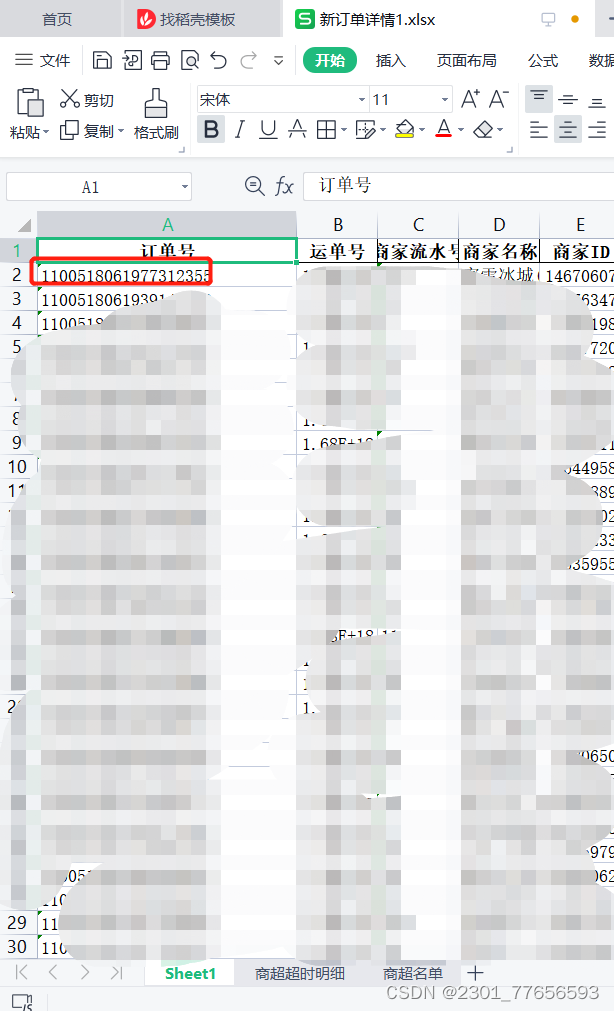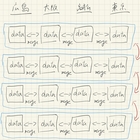Invalidindexerror: Reindexing Only Valid With Uniquely Valued Index Objects
Introduction
When working with data analysis and manipulation in Python, specifically with libraries like Pandas and Scanpy, you may encounter an error known as InvalidIndexError. This error occurs specifically when trying to reindex objects with non-unique index values. In this article, we will delve into the details of this error, its causes, ways to handle it, and how to prevent it.
Section 1: What is a Reindexing Error?
Reindexing is a crucial operation in data analysis, as it allows you to change the order, add or remove labels, or even align two datasets with matching indices. However, when the index values are not unique, it poses a problem. This is when the InvalidIndexError arises, clearly indicating that reindexing is invalid unless the index values are unique.
Section 2: Understanding the InvalidIndexError
The InvalidIndexError is a specific error message in Python that appears when attempting to reindex objects with non-unique index values. This error helps in ensuring data integrity and helps us avoid misleading or ambiguous data manipulation results.
Section 3: Causes of the InvalidIndexError
There can be multiple causes for the InvalidIndexError to occur. Here are some common scenarios:
1. Duplicated Index Values: If your dataset contains duplicate index values, you will encounter the InvalidIndexError when attempting to reindex. This situation can happen if you mistakenly add duplicated indices or if the data itself includes duplicates.
2. Concatenating Dataframes: When concatenating two dataframes using functions like `pd.concat`, if the resulting dataframe has non-unique index values, the InvalidIndexError will be raised.
3. Removing Rows or Columns by Index: Pandas offers the flexibility to remove rows or columns based on their index values. However, if these index values are not uniquely defined, it will lead to the InvalidIndexError.
Section 4: How to Handle the InvalidIndexError
When encountering the InvalidIndexError, follow these steps to handle it effectively:
1. Identify the Source: Determine which operation or function caused the error. This might involve reviewing your code or checking the error message traceback.
2. Check for Duplicates: Referring to the specific index mentioned in the error message, inspect your data for duplicated index values using methods like `duplicated()` or `value_counts()`.
3. Resolve Duplicate Index Values: Depending on the situation, you can choose to drop the duplicated index values, rename them, or reindex the data using a unique identifier.
Section 5: Preventing the InvalidIndexError
Prevention is always better than cure. To avoid encountering the InvalidIndexError in the first place, consider applying the following practices:
1. Clean Data: Conduct a thorough data cleaning process to eliminate any duplicates or inconsistent index values.
2. Unique Identifiers: Wherever possible, use unique identifiers as index values, ensuring each index corresponds to a single data entry.
3. Use Appropriate Functions: Be cautious while using functions like `pd.concat`, ensuring that the resulting data is aligned properly and has unique index values.
Section 6: Frequently Asked Questions about the InvalidIndexError
Q1: What is the significance of handling the InvalidIndexError?
A: Handling the InvalidIndexError is crucial as it ensures the accuracy and reliability of your data analysis results. Ignoring this error can lead to misinterpretation or incorrect conclusions.
Q2: How does the InvalidIndexError relate to Scanpy?
A: Scanpy is a widely used Python library for single-cell RNA-seq analysis. While the InvalidIndexError can occur in Scanpy when manipulating or reindexing data, the steps to handle it are similar.
Q3: Are there any alternative functions to `pd.concat` that do not raise the InvalidIndexError?
A: Yes, you can use `DataFrame.append` to concatenate dataframes without encountering the InvalidIndexError. However, keep in mind that this appends rows rather than aligning indices.
Q4: How can I drop a row or column by index without facing the InvalidIndexError?
A: To drop a row by index, you can use the `drop()` function with the specific index value. Similarly, dropping a column by index can be done using `drop()` with `axis=1`.
Q5: How can I sort the index of a pandas DataFrame to ensure uniqueness?
A: To sort the index of a DataFrame, you can use the `sort_index()` function. This will arrange the rows based on index values in ascending or descending order, ensuring uniqueness.
Conclusion
The InvalidIndexError is an error message that you may encounter when working with Python libraries like Pandas or Scanpy, primarily when reindexing objects with non-unique index values. By understanding the causes, handling techniques, and preventative measures discussed in this article, you can effectively overcome this error and ensure accurate data analysis.
Pandas : Concat Dataframe Reindexing Only Valid With Uniquely Valued Index Objects
Keywords searched by users: invalidindexerror: reindexing only valid with uniquely valued index objects scanpy invalidindexerror: reindexing only valid with uniquely valued index objects, Pd concat, reindexing only valid with uniquely valued index objects append, Pd concat two dataframes, Drop row by index pandas, Pandas drop column by index, Sort index pandas, Pandas dataframe remove row by index
Categories: Top 92 Invalidindexerror: Reindexing Only Valid With Uniquely Valued Index Objects
See more here: nhanvietluanvan.com
Scanpy Invalidindexerror: Reindexing Only Valid With Uniquely Valued Index Objects
Scanpy is a popular open-source single-cell RNA sequencing (scRNA-seq) analysis toolkit. It provides a wide range of functionalities for preprocessing, clustering, visualization, and interpretation of scRNA-seq data. However, like any software tool, users may encounter certain errors during their analysis. One such error is the “InvalidIndexError: Reindexing only valid with uniquely valued index objects.” In this article, we will delve into the details of this error, its causes, and potential solutions. We will also address some frequently asked questions (FAQs) to provide a comprehensive understanding of this issue.
Understanding the InvalidIndexError:
The InvalidIndexError in Scanpy occurs when there are duplicate values in the index of an AnnData object. AnnData is a central data structure in Scanpy that stores scRNA-seq data along with various annotations. Each cell or observation is represented by a unique index in AnnData. However, if there are multiple cells with the same index value, an InvalidIndexError is triggered.
Causes of InvalidIndexError:
1. Merging Duplicated Cells: This error can occur when attempting to merge or concatenate AnnData objects that have duplicate cells with the same index values. Scanpy requires unique index values for each cell and raises this error if that condition is violated.
2. Incorrect Data Initialization: Another common cause of this error is improper initialization of AnnData objects, where the user assigns non-unique index values to cells.
Solutions to Resolve the InvalidIndexError:
1. Verify Duplicates in Index: To diagnose the cause of the InvalidIndexError, it is essential to identify the specific AnnData object(s) that contain duplicate index values. You can use the `adata.obs.index.duplicated()` function to check if there are duplicate index values within the `obs` attribute of `adata`.
“` python
import scanpy as sc
duplicated_indices = adata.obs.index.duplicated()
print(duplicated_indices)
“`
2. Remove Duplicate Index Values: In cases where duplicates are identified, it is crucial to address these duplicate entries by removing or renaming them. You can use the `adata.obs_names_make_unique()` function to automatically make the index values unique by appending a suffix to each duplicate index.
“` python
sc.settings.verbosity = 3 # Boost verbosity to show details about the changes made
adata.obs_names_make_unique()
“`
3. Correct Data Initialization: If the InvalidIndexError arises due to incorrect data initialization, ensure that each cell is assigned a unique index value during the creation of AnnData objects. When combining multiple datasets, it is important to verify cell identity and avoid introducing duplicate indices.
Frequently Asked Questions (FAQs):
Q1. Why does Scanpy require unique index values?
To maintain consistency and integrity in the scRNA-seq analysis, Scanpy relies on unique index values for each cell. Unique indices are essential to precisely map the data to corresponding annotations and perform various computational operations accurately.
Q2. How can I avoid the InvalidIndexError when merging datasets?
When merging datasets, make sure each cell has a unique index. Before merging, check for duplicate indices using the `adata.obs.index.duplicated()` function. If duplicates are present, follow the solutions mentioned above to address this issue.
Q3. Can I manually edit index values to resolve the InvalidIndexError?
While it is technically possible to manually edit index values, it is generally not recommended. Changing index values introduces complexities and increases the chances of introducing errors in downstream analyses. It is preferable to use the provided functions, such as `adata.obs_names_make_unique()`, to automatically handle index uniqueness.
Q4. Does InvalidIndexError affect downstream analysis steps?
Yes, the InvalidIndexError can impact downstream analysis steps in Scanpy. Many functions and methods rely on unique index values to perform computations accurately. Therefore, resolving this error is crucial for ensuring the validity of any results obtained during scRNA-seq analysis.
In conclusion, the InvalidIndexError in Scanpy occurs when duplicate values are present in the index of an AnnData object. To resolve this error, it is important to identify and address duplicate index values by removing or renaming them. It is also crucial to ensure proper initialization of AnnData objects with unique index values. By following these solutions, users can successfully overcome this error and continue their scRNA-seq analysis seamlessly.
Pd Concat
Concatenation, the process of combining two or more strings or arrays, plays a crucial role in many programming tasks. It allows developers to merge data efficiently, saving time and effort. One such tool that aids in this process is “pd.concat” in Python’s pandas library. This article will delve into the intricacies of pd.concat, its numerous functionalities, and why it is a valuable asset for data manipulation.
Understanding the Basics of pd.concat
Pandas, a widely-used data manipulation library, offers a powerful function called pd.concat to concatenate Series or DataFrames along a particular axis. In its simplest form, pd.concat takes in a sequence of Series or DataFrames and returns a consolidated result. By default, it concatenates along axis 0, which represents the rows.
Suppose we have two DataFrames, df1 and df2, and want to concatenate them:
“` python
import pandas as pd
df1 = pd.DataFrame({‘A’: [1, 2, 3], ‘B’: [4, 5, 6]})
df2 = pd.DataFrame({‘A’: [7, 8, 9], ‘B’: [10, 11, 12]})
result = pd.concat([df1, df2])
print(result)
“`
The output will be as follows:
“`
A B
0 1 4
1 2 5
2 3 6
0 7 10
1 8 11
2 9 12
“`
As shown, pd.concat seamlessly combines both DataFrames, maintaining row indexes. If we want to reset the index, we can pass `ignore_index=True` as an argument to the function, resulting in a fresh index for the concatenated data.
Concatenating DataFrames with Different Columns
Concatenating DataFrames can pose challenges when they have varying columns or column orders. pd.concat offers solutions for such scenarios as well. By default, when concatenating DataFrames with different column sets, it fills missing values with NaN. However, if we specify `join=’inner’` as an argument, it will only keep columns that exist in both DataFrames, discarding the rest.
“` python
df3 = pd.DataFrame({‘A’: [1, 2, 3], ‘C’: [4, 5, 6]})
result = pd.concat([df1, df3], join=’inner’)
print(result)
“`
The output will be:
“`
A
0 1
1 2
2 3
0 1
1 2
2 3
“`
As shown, only the shared `A` column exists in the concatenated result.
Combining DataFrames Horizontally
While pd.concat’s default behavior concatenates along the rows, it is also capable of concatenating along the columns (axis=1). This operation merges two or more DataFrames, side by side, augmenting the existing data.
Let’s consider two DataFrames, df4 and df5, with corresponding indexes:
“` python
df4 = pd.DataFrame({‘A’: [1, 2, 3], ‘C’: [4, 5, 6]}, index=[0, 1, 2])
df5 = pd.DataFrame({‘B’: [7, 8, 9], ‘D’: [10, 11, 12]}, index=[0, 1, 2])
result = pd.concat([df4, df5], axis=1)
print(result)
“`
The output will be:
“`
A C B D
0 1 4 7 10
1 2 5 8 11
2 3 6 9 12
“`
The operation combines the DataFrames based on their indexes, providing a comprehensive view of the data.
Frequently Asked Questions
Q: Can pd.concat handle more than two DataFrames simultaneously?
A: Absolutely! pd.concat can handle any number of DataFrames in a single function call. Simply provide all the DataFrames as a sequence in the required order.
Q: What is the difference between pd.concat and DataFrame.append?
A: While both functions can concatenate DataFrames, pd.concat offers more flexibility by allowing concatenation along both rows and columns, as well as providing options to handle different column sets. DataFrame.append, on the other hand, mainly focuses on appending rows.
Q: How does pd.concat handle duplicate indexes?
A: By default, pd.concat preserves the original indexes, resulting in duplicate index values if they exist. However, setting `ignore_index=True` will generate a fresh index, irrespective of the original data.
Q: Are there any other parameters that can be passed to pd.concat?
A: pd.concat offers various parameters to customize the concatenation process. For example, `keys` enables creating a hierarchical index, `sort` sorts the result by the column names, and `verify_integrity` checks for potential duplicate column names.
Conclusion
pd.concat is a versatile and efficient tool for concatenating DataFrames and Series in Python’s pandas library. It simplifies the process of combining data, regardless of variations in columns or column orders. Whether it is merging along rows or columns, pd.concat provides precise control over the concatenation operation. Understanding its functionalities and options can greatly enhance a developer’s ability to manipulate and analyze data effectively. So embrace pd.concat, and streamline your concatenation process!
Images related to the topic invalidindexerror: reindexing only valid with uniquely valued index objects

Found 18 images related to invalidindexerror: reindexing only valid with uniquely valued index objects theme




















Article link: invalidindexerror: reindexing only valid with uniquely valued index objects.
Learn more about the topic invalidindexerror: reindexing only valid with uniquely valued index objects.
- Concat DataFrame Reindexing only valid with uniquely …
- Reindexing only valid with uniquely valued Index objects
- Reindexing only valid with uniquely valued Index objects …
- Concat DataFrame Reindexing only valid with uniquely …
- Python – Concat DataFrame Reindexing only valid … – iTecNote
See more: https://nhanvietluanvan.com/luat-hoc/